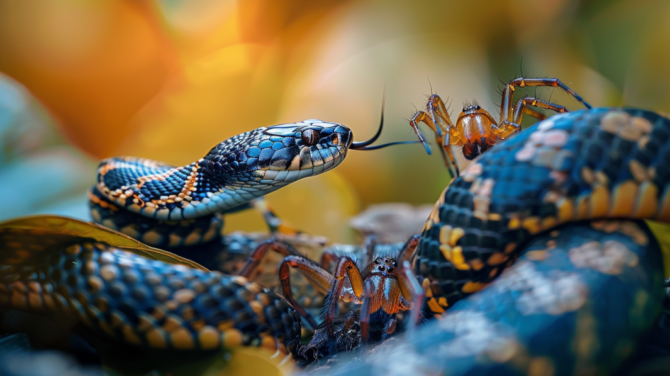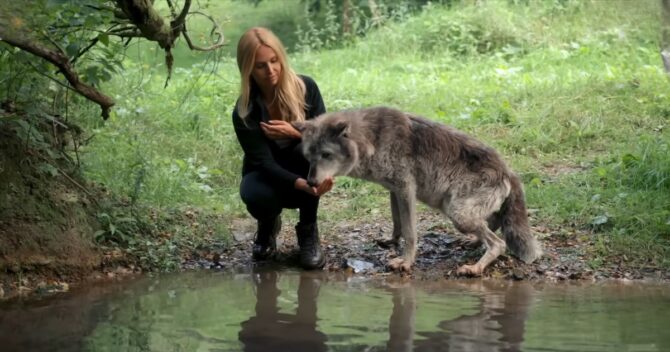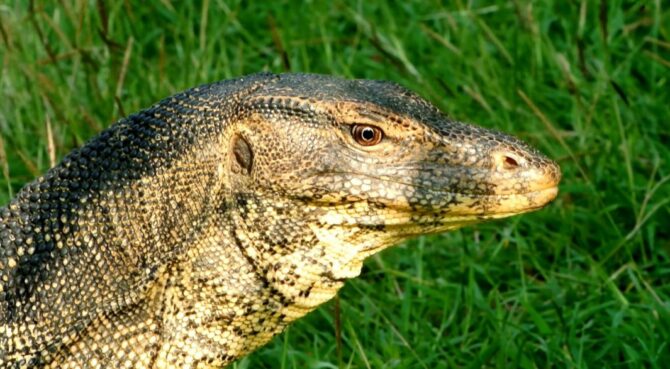Whether you’re an outdoor enthusiast, a curious animal lover, or someone who just loves a good wildlife documentary, you’ve probably pondered the complexities of animal diets. After all, nature’s food web is an intricate tapestry of predator and prey relationships that is as fascinating as it is essential to ecosystems.
One question that may pique your interest is, “Do bears eat deer?” In this blog post, we are talking about the fascinating world of bear diets and their relationship with deer. This is not just a ‘yes or no’ inquiry; it’s an exploration into the nuanced eating habits of these awe-inspiring mammals.
So, strap in and get ready for an educational journey that answers not only the titular question but also uncovers the captivating biology and ecology behind it.
The Complex Nature of Bear Diets
Bears are often categorized as omnivores, meaning they eat both plants and animals. However, labeling them solely as omnivores simplifies a rather complex and adaptive diet.
Various factors, such as seasonal availability, geographic location, and food competition, influence what bears consume.
Why You Need to Understand Their Diets
Understanding the intricacies of bear diets isn’t just a matter of satisfying our own curiosity; it has broader implications.
For instance, getting a handle on their diets can offer valuable insights into wildlife management, conservation, and even human-bear interactions.
Different Species and Their Diets
The bear family, Ursidae, consists of eight species scattered across different continents. While this blog post can’t cover them all, we will zero in on three species that are particularly relevant to our topic.
American Black Bear

What’s on the Menu?
The American black bear is predominantly found in North America and is the most adaptable among its cousins.
They’re opportunistic feeders who chow down on a wide range of food items—from berries and nuts to insects and small mammals.
Deer Inclusion in Diet: Rare but Possible
While black bears usually prefer easier prey like insects and smaller mammals, they can and sometimes do prey on deer—particularly fawns. The likelihood of this occurring increases in situations where other food sources are scarce.
Grizzly Bear
Powerhouse Predators
Grizzlies are the powerful omnivores often found in North America’s wilderness. With a diet that includes fish, plants, and small-to-large mammals, they are the quintessential opportunistic feeders.
Deer: A Part of the Dietary Mix
Grizzlies do eat deer when the opportunity arises, but it’s generally not their first choice. However, during seasons when high-caloric foods like salmon aren’t available, deer—especially vulnerable individuals like fawns or injured adults—can be targeted.
Polar Bear
A Different Ecological Stage
Polar species are predominantly carnivorous due to their Arctic habitat, which offers limited plant life. They primarily feast on seals but can eat terrestrial mammals when the opportunity presents itself.
Deer: An Unlikely Feast
In the polar bear’s icy realms, deer are not commonly found. However, in the rare instances where their territories overlap, such as parts of the Arctic tundra, a hungry polar bear may take down a deer if no easier prey is available.
The Deer Factor: Understanding the Prey
A Staple in Nature’s Grocery Store
Deer are an integral part of many ecosystems and serve as prey for various predators, including bears. There are numerous deer species worldwide, but in North America, the white-tailed deer and mule deer are the most common.
How Deer Evade Predators
Deer have several tactics for evading predators: they’re quick, agile, and have acute senses. However, their most effective escape strategy is their social behavior—they often move in groups, making it more challenging for solitary predators like bears to make a successful kill.
Deer Seasonality and Vulnerability
Deer are more vulnerable during specific seasons—namely, during fawning, when mothers are occupied with their young, and during the rut, when male deer are distracted by mating rituals. This seasonality can affect their chances of becoming a bear’s dinner.
What Science Says: Research Studies & Observations
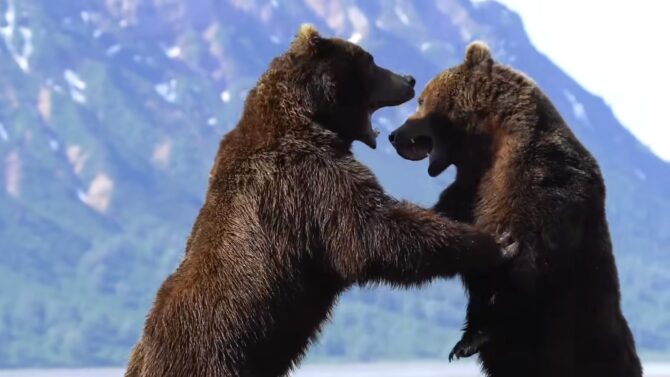
Monitoring Diets
Researchers use various methods to study bear diets, including scat analysis and direct observation. These methods have provided valuable insights into what bears eat and how often deer appear on their menu.
Key Findings
- Grizzlies are more likely to consume deer in the spring before other food sources like berries and salmon become abundant.
- American black species consume deer more frequently in years when mast (nuts and berries) availability is low.
- Polar bears rarely, if ever, consume deer due to geographic isolation and preference for seals.
Human Impact: Hunting, Habitats, and Food Availability
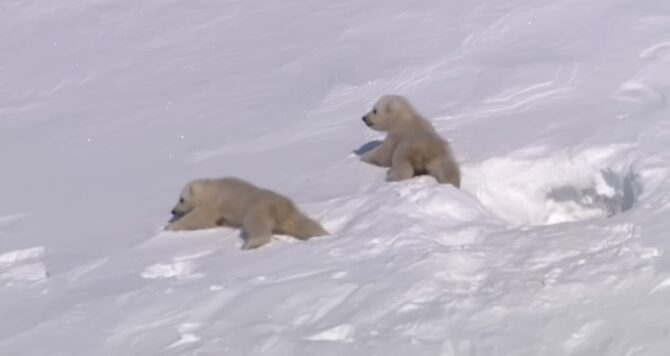
How Hunting Affects Bear Diets
Hunting regulations can indirectly affect bear diets. Overhunting of deer may force bears to seek alternative food sources, while responsible hunting can sustain a balanced ecosystem where they can naturally prey upon deer.
The Loss of Habitats
Urban development and deforestation can disrupt natural habitats, leading bears to wander into human-dominated areas in search of food. This can cause bears to rely on unnatural food sources, such as garbage, and less on natural prey, like deer.
The Ecosystem Impact
The Butterfly Effect in Nature
The predator-prey relationship between bears and deer isn’t isolated—it impacts the broader ecosystem. When they prey on deer, it can help control the deer population, which in turn affects vegetation and the availability of resources for other animals.
A Balancing Act: Predation and Population Control
Overpopulation of deer can lead to overgrazing, depleting resources needed by other herbivores. By preying on deer, bears indirectly assist in balancing the ecosystem. This highlights the importance of maintaining natural predator-prey relationships as a form of biological control.
Human Intervention: A Double-Edged Sword
Human activities like hunting and habitat modification can either support or disturb this natural balance. Overhunting of bears or deer may tip the scales, causing unforeseen consequences such as increased spread of diseases or destruction of vegetation due to overgrazing.
Global Perspectives
European Species
While North America is often the focal point of bear research, Europe also has its native species, like the Brown bears. They have been observed preying on Red deer and Roe deer in areas where their habitats overlap.
Asian Perspectives
Asia offers unique examples, like the Asiatic black bear and the Himalayan brown bear, which have different diets compared to their North American counterparts. They will consume deer when available, but their primary diet often includes a higher proportion of plant material due to regional availability.
FAQs
Which species of bears are known to eat deer?
Black and grizzly bears in North America, as well as brown species in Europe and Asia, have been observed hunting deer.
Do bears eat fawns?
Yes, they may target fawns as they are easier to catch than adult deer. Fawns are relatively small and inexperienced, making them vulnerable to predation.
How often do bears kill deer?
The frequency varies depending on the region and the species involved. Estimates suggest that a bear may kill 10 to 30 deer annually, although this is not a regular occurrence.
How do bears hunt deer?
They use a combination of stalking, ambush, or pursuit to catch their prey. They may use their keen sense of smell to detect prey and then silently stalk or ambush them.
What other animals do bears eat?
They are omnivores, and their diet can include fish, small mammals like rodents and rabbits, birds, and insects. They may also scavenge on carrion.
Are bears more likely to hunt deer or scavenge?
In most regions, they are more likely to scavenge on carcasses or focus on other food sources rather than actively hunting deer.
What other animals are known to eat deer?
Wolves, coyotes, mountain lions, eagles, bobcats, vultures, alligators, leopards, and humans are other predators that eat deer.
What is the ecological significance of bears eating deer?
Predation by bears, along with other predators, plays an important role in regulating populations of prey species like deer. It helps ensure that the healthiest and strongest individuals survive and reproduce, leading to a stronger and more resilient animal population.
Final Words
So, do bears eat deer? The answer is a nuanced yes, influenced by various factors such as species, seasonality, and availability of other food sources. While deer are not the staple diet for most bears, they can become a part of the meal plan when circumstances align.
Understanding this predator-prey relationship is essential for wildlife management, conservation efforts, and enriching our own appreciation for the complexities of nature.


